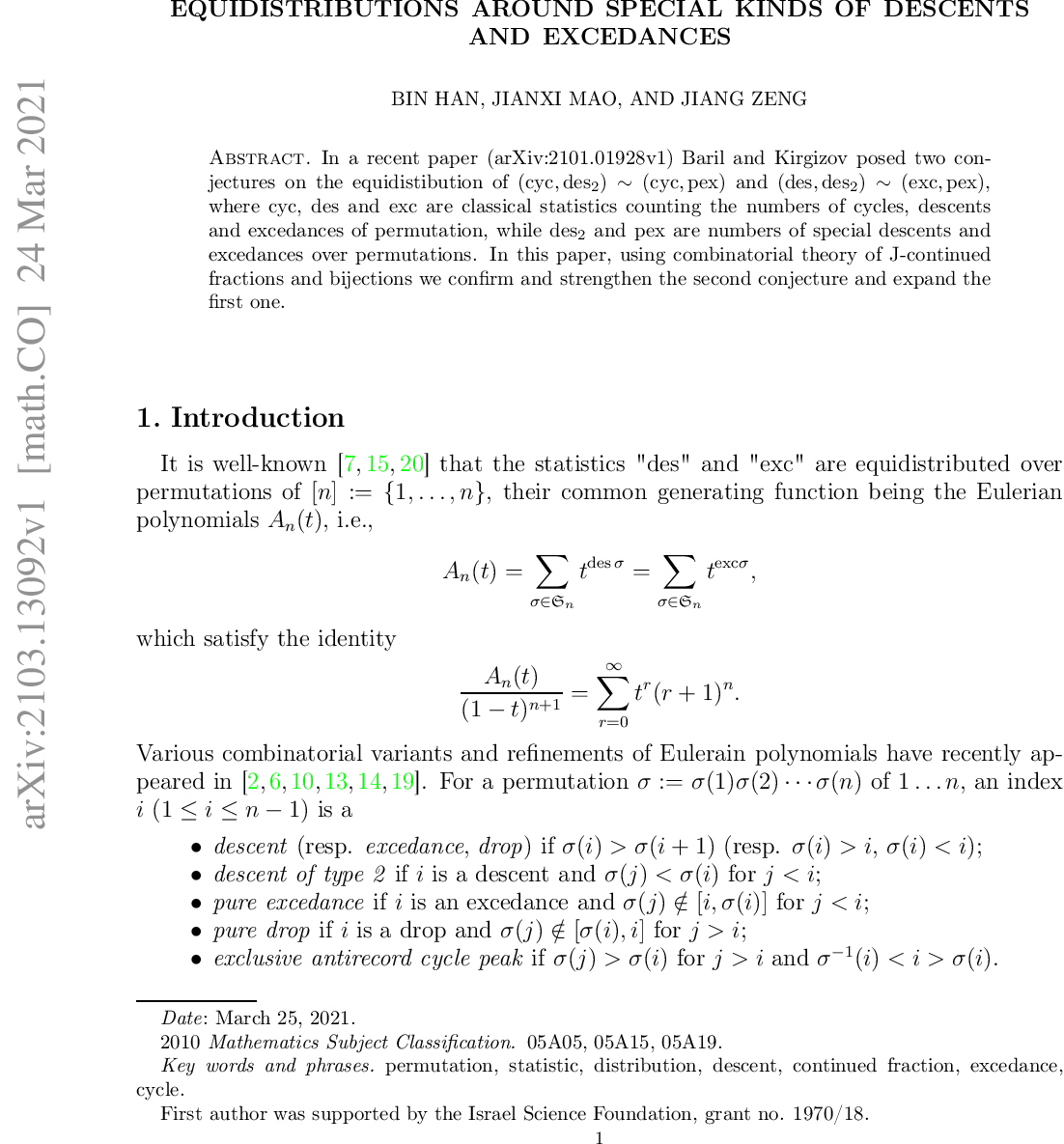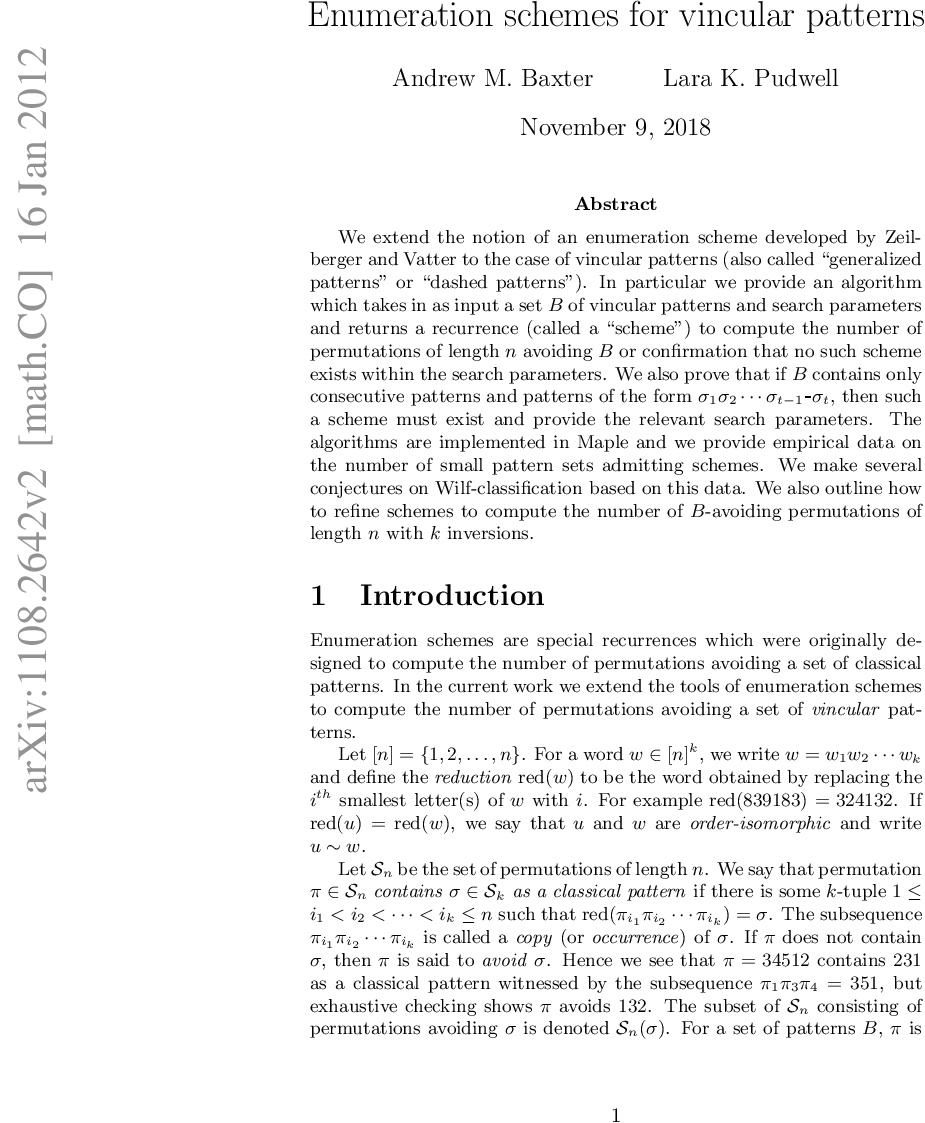

Wellcome to Sergey Kirgizov's library,
You can find here all papers liked or uploaded by Sergey Kirgizovtogether with brief user bio and description of her/his academic activity.
Sergey's personsal site : http://kirgizov.link.
☆
1
Comments:
I wonder if we can obtain asymptotic results in the same manner...
A related [question](https://mathoverflow.net/questions/384683/random-permutations-without-double-rises-avoiding-consecutive-pattern-underli/384947#384947) on Mathoverflow.
☆
1
Comments:
The article provides an extension of Boltzmann sampling to the realm of labeled combinatorial structures, enumerated by exponential generating functions and constructed using the box product.
----
[Boltzmann sampling](https://en.wikipedia.org/wiki/Boltzmann_sampler) is a general, pretty fast, technique for generate uniformely random combinatorial structures specified by structural equations.
The key idea of Boltzmann sampling can be illustrated by the following example.
Suppose you have a generating function
$$f(x) = x + x^2 + x^2 + x^3 + x^3 + x^3 + x^3 + x^4 ...$$
corresponding to the one object of size one, two objects of size 2, four objects of size 3, etc.
If you set, for example, $x = \frac{1}{2}$ then
$$f\left(\frac{1}{2}\right) = \frac{1}{2} + \left(\frac{1}{2}\right)^2 + \left(\frac{1}{2}\right)^2 + \left(\frac{1}{2}\right)^3 + \left(\frac{1}{2}\right)^3 + \left(\frac{1}{2}\right)^3 + \left(\frac{1}{2}\right)^3 + \left(\frac{1}{2}\right)^4 ...$$
Now let's take $x$ such that $f(x) < \infty$, and chose an integer $k$. As you think, it quickly becomes clear that you can use this to chose a random object of size $k$. The probability equals precisely $\frac{x^k}{f(x)}$. For a given $k$ it is uniform.
The elaboration of this idea in the context of structural equations (a.k.a. recursive decompositions, [symbolic method](https://en.wikipedia.org/wiki/Symbolic_method_%28combinatorics%29)) leads you to Boltzmann sampling technique. And knowing the values of generating functions together with corresponding recursive decompositions will allow you to generate a random object according to a uniform probability measure for any size. Shifting $x$ you will shift the mean size of a generating object.
See [Boltzmann Samplers For The Random Generation Of Combinatorial Structures](https://www.researchgate.net/publication/2562585_Boltzmann_Samplers_For_The_Random_Generation_Of_Combinatorial_Structures) paper
by Duchon, Flajolet, Louchard and Schaeffer for such elaboration.
See also these 2 related questions on MathOverflow:
https://mathoverflow.net/questions/384683/random-permutations-without-double-rises
https://mathoverflow.net/questions/14863/random-alternating-permutations



Comments: